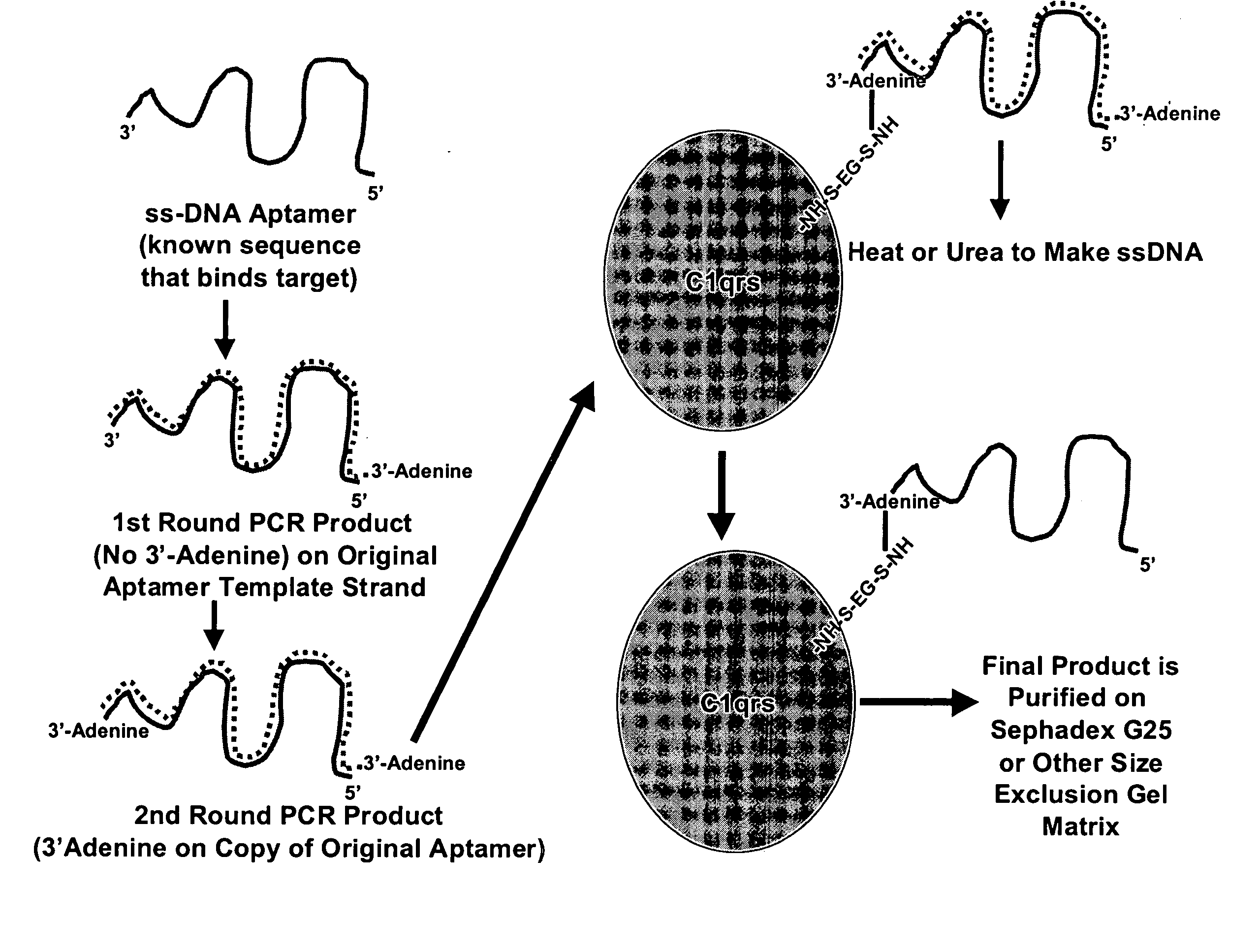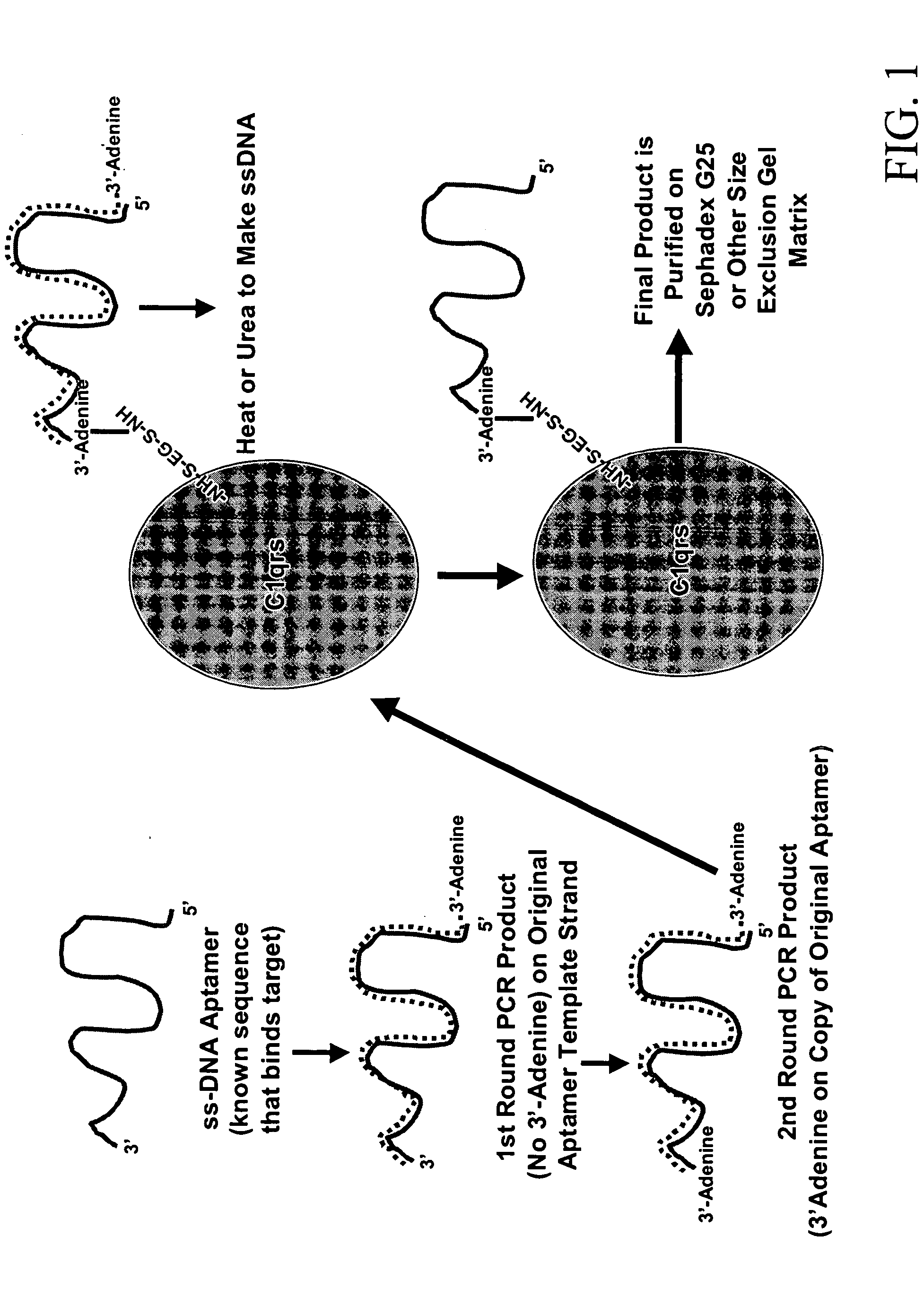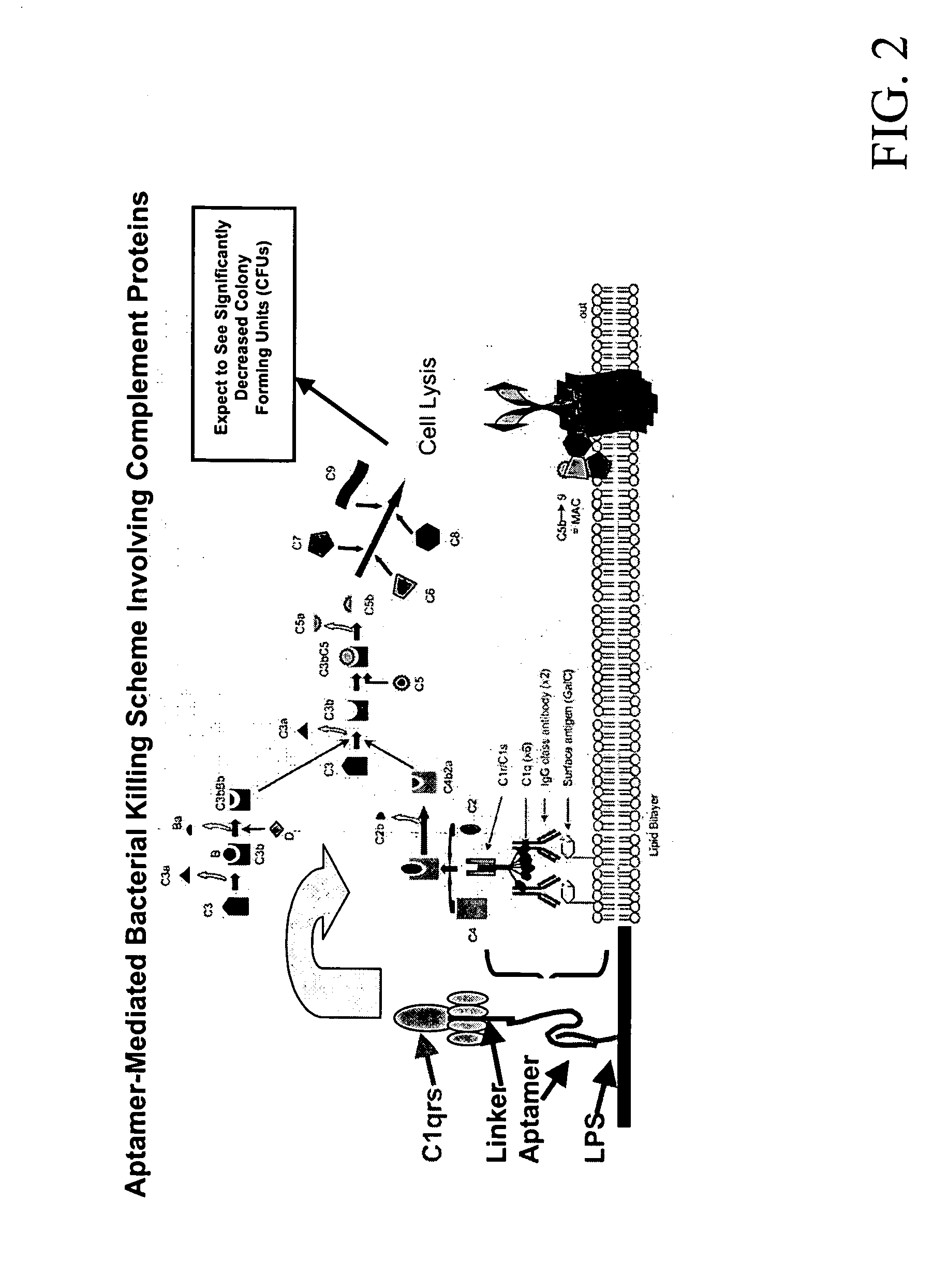Therapeutic nucleic acid-3' -conjugates
a nucleic acid and peptide technology, applied in the field of nucleic acid-based therapeutics, can solve the problems of nonfunctional and nonallergenic, and achieve the effects of preventing aptamer breakdown and clearance, neutralizing its effect, and high-effective and long-lasting therapeutics
- Summary
- Abstract
- Description
- Claims
- Application Information
AI Technical Summary
Benefits of technology
Problems solved by technology
Method used
Image
Examples
example 1
Nucleic Acid-3′-Protein Conjugation
[0028] Two prime (2′) modifications of nucleotides in RNA aptamers have been reported to work well for nuclease resistance (Bell et al., 1999 and Ulrich et al., 2002) against certain specific bacterial nucleases and against serum nucleases. Some researchers claim that DNA aptamers can be protected by 2′-Fluoro-deoxynucleotide (dNTP) incorporation (Ono et al., 1997). However, there is not much definitive data on this topic in the literature. Further, it is difficult to incorporate 2′F-dNTPs into DNA by PCR (Ono et al., 1997) or other means as most DNA polymerases either will not incorporate 2′F-dNTPs (i.e., reject them as substrates or they are poorly incorporated) or the 2′-F-dNTPs are excised by the polymerase's editing function.
[0029] An alternative method for conferring resistance to serum nucleases is capping of the DNA termini, especially the 3′ end as shown by Dougan et al. (2000). Dougan capped aptamers with the small molecule biotin and s...
example 2
Aptamer-3′-LPS
[0035] Sulfo-EGS was dissolved at 10 mg / mL in sterile PBS and 132 μL of this stock solution added to 0.1 mg of human Clqrs protein (molecular weight of 750 kD). This ratio provided the 20-fold molar excess of Sulfo-EGS recommended for Sulfo-EGS conjugations.
[0036] One hundred μL (approximately 33 μg) of SELEX round 5 or greater DNA aptamers in their cold (double-stranded) form was added to the solution. The reactants were allowed to stand at RT for 1 hour and were then added to a PHARMACIA™PD- 10 desalting column (SEPHADEX™ G-25) equilibrated with several void volumes of sterile PBS. Twelve to fifteen 1 mL fractions were eluted in PBS and collected as individual fractions. Absorbance readings were taken for all fractions at 260 nm and 280 nm. In addition, 5 μL of each fraction was added to 5 μL of native polyacrylamide gel electrophoresis (PAGE) loading buffer and run on 8-10% polyacrylamide gels that were fixed and silver stained to verify successful conjugation.
[0...
example 3
[0050]FIG. 3 illustrates the general concept of aptamer (or aptamer-3′-protein conjugate) binding to toxins to inhibit or inactivate the toxin. If the toxin is a small molecule that is inherently toxic to biological systems, then the binding of target-specific developed aptamers should ameliorate or eliminate toxicity by stoichiometrically wrapping around the toxin to disallow it from interacting within a biological system. If the toxin is an enzyme, then binding of a specific aptamer or aptamer-3′-protein (albumin) conjugate to the active site should diminish or cease enzymatic activity.
[0051] One example of DNA aptamer-mediated enzymatic toxin inhibition can be seen in the binding of specific botulinum A toxin (BoNT A) aptamers to BoNT A, thereby inhibiting the toxin's ability to cleave its SNAP 25 peptide substrate. Using a specific SNAP 25 FRET assay known as the SNAPtide™ assay, aptamers developed against both the holotoxin and the 50 kD zinc endopepti...
PUM
| Property | Measurement | Unit |
|---|---|---|
| Angle | aaaaa | aaaaa |
| Volume | aaaaa | aaaaa |
| Volume | aaaaa | aaaaa |
Abstract
Description
Claims
Application Information
 Login to View More
Login to View More - R&D
- Intellectual Property
- Life Sciences
- Materials
- Tech Scout
- Unparalleled Data Quality
- Higher Quality Content
- 60% Fewer Hallucinations
Browse by: Latest US Patents, China's latest patents, Technical Efficacy Thesaurus, Application Domain, Technology Topic, Popular Technical Reports.
© 2025 PatSnap. All rights reserved.Legal|Privacy policy|Modern Slavery Act Transparency Statement|Sitemap|About US| Contact US: help@patsnap.com



